Backyard chickens are no longer just a rural thing.
More people (yes, even in the suburbs and cities) are setting up small flocks of hens right behind their homes. They’re looking for fresh eggs, a way to control garden pests, and maybe even a quirky new family pet.
But keeping chickens is more than tossing scratch feed in the grass and waiting for breakfast to hatch. There’s zoning to check, coops to build, and predators to keep out.
In this article, I'll cover everything you actually need to know before you bring a single bird home.
Whether you’re hoping to collect blue eggs from a fluffy Araucana or just want to stop buying overpriced cartons at the grocery store, this isn’t just a hobby – it’s a daily routine.
And one that pays off in surprising ways.
Are Chickens Even Allowed Where You Live?
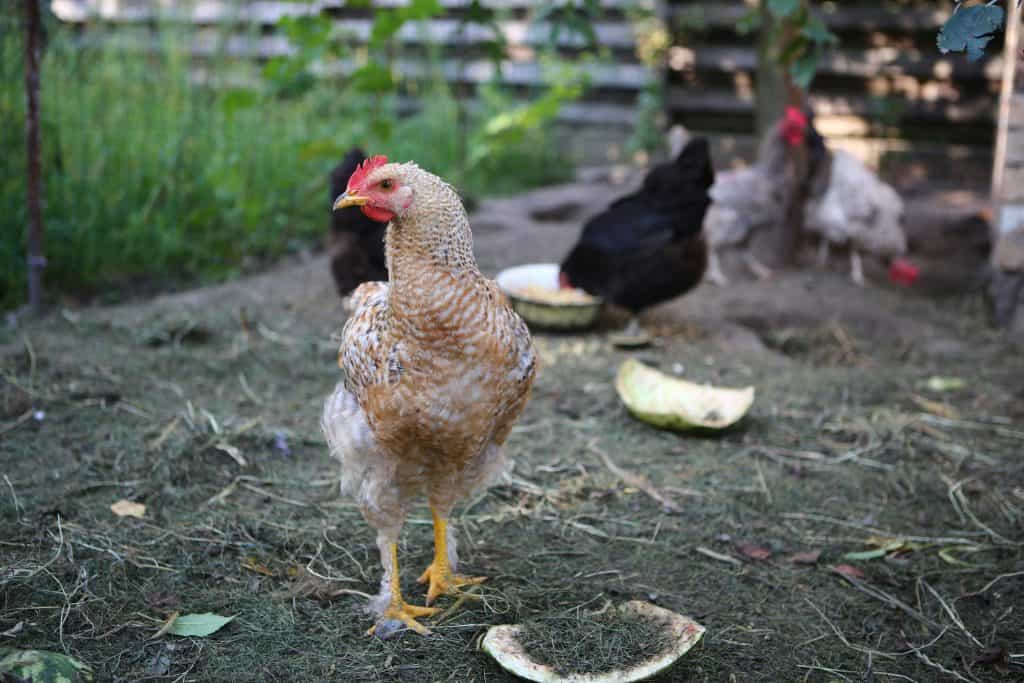
Before you start browsing chicken breeds or building a coop, hit pause.
The biggest mistake people make with backyard chickens? Not checking if they’re even allowed. Local laws, city ordinances, and HOA rules can make or break your plans.
Some cities limit the number of hens you can keep (maybe four, maybe six). Others ban roosters altogether because of noise complaints.
You might find there are rules about how far the coop needs to be from your neighbor’s house or how waste is handled. And if you live in a neighborhood with a homeowners' association, there may be an outright ban.
The safest route? Contact your city or county office and ask directly about residential poultry laws. Ask them about:
- Allowed flock size
- Rooster restrictions
- Minimum distance between coop and property lines
- Requirements for coop cleanliness or odor control
Also, check with your HOA if you have one. Their rules can be more strict than the city’s.
While you’re at it, read up on waste disposal rules. Many places require chicken manure to be composted, not dumped. Same with disposing of deceased birds – it’s not glamorous, but it’s part of the responsibility.
A little research now saves a lot of headaches later.
Why Keep Chickens?

Eggs are the obvious benefit. Fresh ones, collected right from the nesting box, with deep yellow yolks and sturdy whites. But they’re only part of the story.
Chickens earn their keep in other ways. Let them roam and they’ll go after ticks, beetles, and garden pests like tiny feathered exterminators. They scratch through soil, helping aerate it. Their manure is one of the best nitrogen sources your compost pile could ask for.
They’re also surprisingly good company. Certain breeds like Silkies or Buff Orpingtons are known to be gentle and affectionate.
Chickens have distinct personalities, social hierarchies, and sometimes an odd sense of curiosity that keeps things interesting. Some will follow you around the yard like little clucking shadows.
That said, don’t expect to save big money. Between coops, feed, and upkeep, backyard chicken farming rarely beats grocery store prices.
But what you gain in freshness, connection, pest control, and garden gold? That’s the real value.
Picking the Right Breeds
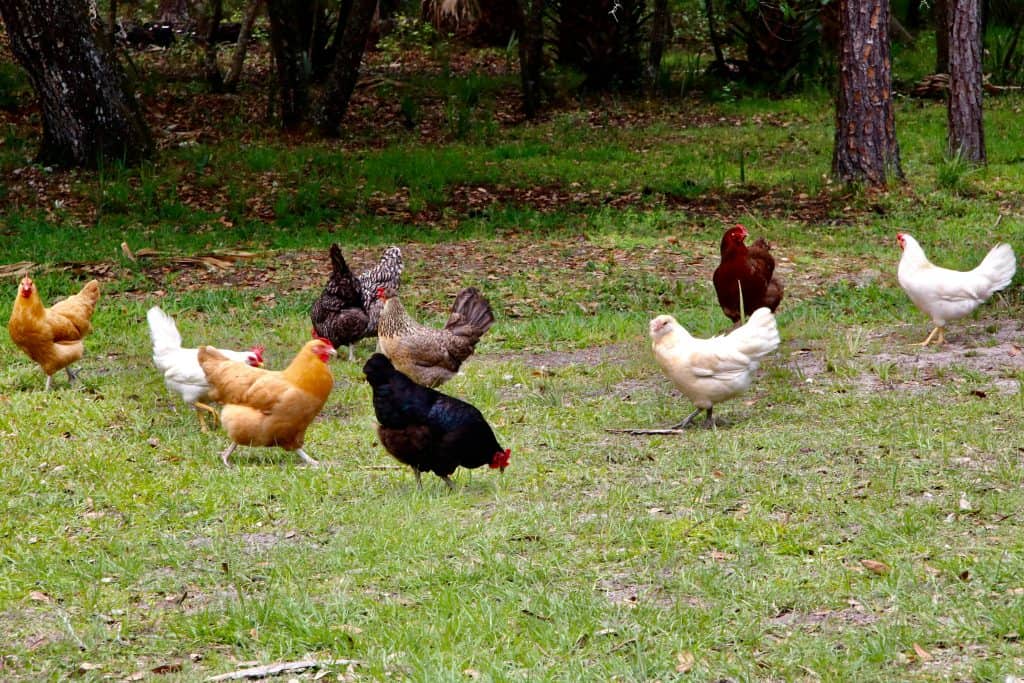
Chickens are not one-size-fits-all. Some lay eggs like machines, some are fluffy oddballs better for photos than omelets, and others just want to peck at your ankles. Picking the right breeds makes all the difference.
Start by thinking about your climate. If you live where winters get cold, look for cold-hardy breeds like:
- Plymouth Rock
- Buff Orpington
- Ameraucana
These breeds handle chilly nights better and are less likely to freeze their combs.
Next, consider temperament especially if you’ve got kids around. Docile breeds like the Silkie, Cochin, and Wyandotte tend to be gentle and social.
Want color variety? Breeds like Araucana and Ameraucana lay blue eggs, and Welsummer eggs are a dark chocolate brown.
If eggs are your main goal, Rhode Island Reds, Leghorns, and Golden Sex Links are consistent layers. Just avoid commercial broiler breeds like Cornish Cross – they grow fast, but they’re prone to health problems and don’t thrive long-term in backyard settings.
A mixed flock is totally fine too. It keeps things interesting, gives you a variety of eggs, and helps balance personalities in the group.
Some people even use tools like mypetchicken.com to narrow down their best matches based on goals and location.
Where to Get Your Birds (And Why Not All Chick Sources Are Equal)
You’ve picked your breeds. Now where do you actually get them? Turns out, not all chicks come from the same kind of place – and it makes a difference.
Local feed stores are a common first stop. In spring especially, many carry chicks for a few weeks at a time.
The upside? You can see the birds in person. Some stores even sell vaccinated chicks. But quality varies, so ask questions: Where do the chicks come from? Are they from an NPIP-certified hatchery?
The National Poultry Improvement Plan (NPIP) is a USDA program that certifies hatcheries as disease-free. Buying from an NPIP source doesn’t guarantee perfection, but it reduces the chance of starting off with sick birds.
Mail-order hatcheries are another option, and many offer broader breed selections. Reliable ones will ship safely and include heat packs if needed.
You’ll want to order in small groups, not singles – chicks are social and shouldn’t be raised alone. Most recommendations say to start with at least three, though six gives you more stability (and eggs).
If you’d rather skip the chick stage, adopting adult hens from a farm sanctuary or small farm has its perks. You’ll know their sex for sure (no surprise roosters), and their personalities are already formed. It’s a good option for people who want a calmer, less fragile start.
Whichever route you take, avoid impulse buys – it’s easy to fall for fluffy yellow cuteness, but your backyard and your routine have to be ready first.
Before the Chickens Come: Your Backyard Needs to Be Ready

Chickens grow fast. One day they fit in your palm, and a few weeks later they’re bouncing off the brooder walls and knocking over the water dish. If you wait until they arrive to prep your space, you’re already behind.
What should be ready before they come home?
- Housing: Even if they start in a brooder, you need to have the main coop and run ready early. Stress from moving or crowding can make them sick.
- Feed and water systems: Don’t leave it to last-minute DIY setups. Chickens need easy access to clean water and balanced food from day one.
- Heat sources for chicks: If you’re raising babies, you’ll need a brooder box with a safe heat lamp or radiant heater – no exceptions.
- Fencing and predator-proofing: If they’re going outdoors anytime soon, your setup has to be secure. Predators don’t wait until you're ready.
Waiting until they outgrow the brooder to start thinking about the coop is a mistake a lot of beginners make.
The shift from indoor chick to backyard bird happens fast, and they won’t pause while you finish hammering things together.
The Coop: Their Bedroom, Bathroom, and Fortress All in One

The chicken coop is more than just a shelter – it’s where they sleep, lay eggs, hide from storms, and fend off predators.
Done right, it keeps your birds safe and productive. Done wrong, it leads to sick hens, lost eggs, and a frustrated chicken keeper.
Here’s what a solid coop should include:
Coop Size
Each chicken needs at least 3 to 4 square feet of space inside the coop. Overcrowding can lead to stress, pecking, and the spread of disease, so give your birds room to move comfortably.
Nesting Boxes
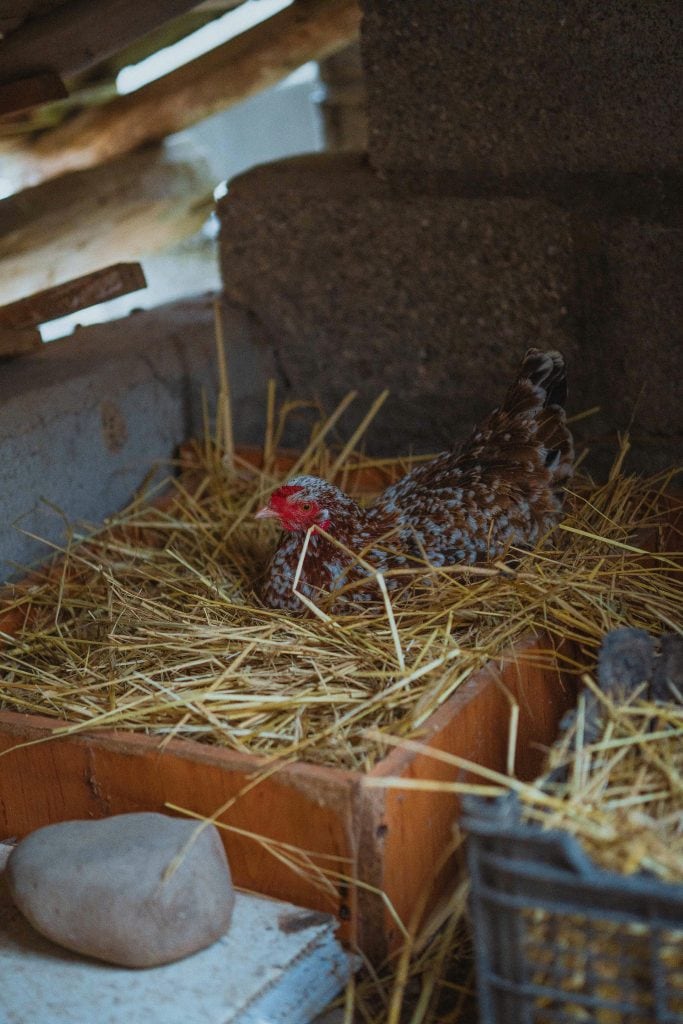
A good rule of thumb is one nesting box for every three hens. Aim for boxes that are about 14″ x 14″ and place them in a quiet, dim area of the coop – hens like their privacy when laying eggs.
Roosting Bars
Chickens prefer to sleep off the ground, so be sure to add roosting bars. Use wood (not metal or plastic) to avoid cold surfaces in winter, and smooth out the edges to prevent foot injuries.
Ventilation
Proper airflow is essential to keep your flock healthy. Good ventilation helps remove moisture and ammonia buildup, but make sure cold drafts don’t blow directly on the birds.
Insulation and Warmth
Cold-hardy breeds can manage low temperatures, but your coop should still retain some warmth. Avoid using heaters unless absolutely necessary – and if you do, use them with extreme caution, as coop fires are a real risk.
Predator Protection
Predators are the biggest threat to backyard flocks. Use hardware cloth (not chicken wire) to secure openings, and bury fencing around the perimeter to block digging animals. Always lock the coop up tight every night.
Rodent Prevention
Chicken feed attracts rats and mice, so store it in airtight metal containers and clean up any spills right away. A tidy coop goes a long way in keeping rodents out.
The coop is where your chickens spend about half their lives. If it's too cramped, too cold, or too easy to break into, everything else falls apart. Build or buy something that holds up to weather, claws, and droppings.
Outdoor Runs and Roaming: Freedom With Fencing

Letting chickens roam freely sounds idyllic – until a hawk swoops down or your neighbor’s dog digs under the fence. Chickens love to explore, but it has to be done safely.
The best compromise? A secure outdoor run. Think of it as their daytime playground: a place to scratch, peck, dust-bathe, and gossip with each other.
Here’s what to know:
Run Space
Plan for at least 10 to 15 square feet per hen in the run. This gives them enough room to roam, scratch, and dust-bathe without feeling cramped or stressed.
Fencing
Quality fencing is a must. Use sturdy materials on all sides—and don’t forget the top if you have hawks or other aerial predators in your area. It’s worth the extra effort for peace of mind.
Digging Defense
To stop digging predators like raccoons or foxes, bury your fencing at least 12 inches underground. You can also bend it outward at the base to create a barrier they can’t easily get through.
Weather Shelter
Your flock needs protection from the elements. Add shade for hot days and shelter from wind and rain. A simple tarp, roof, or lean-to does the trick.
Enrichment
A busy chicken is a happy chicken. Toss in logs, perches, dust baths, or hanging treats to keep things interesting and discourage boredom-related pecking.
Free-ranging is an option, but it’s a risk. If you do let them out beyond the run, supervise or confine it to daylight hours only and be prepared to lose a bird now and then.
Most backyard keepers prefer controlled roaming: just enough freedom, just enough fence.
Feeding Chickens: Don't Just Throw Corn on the Ground
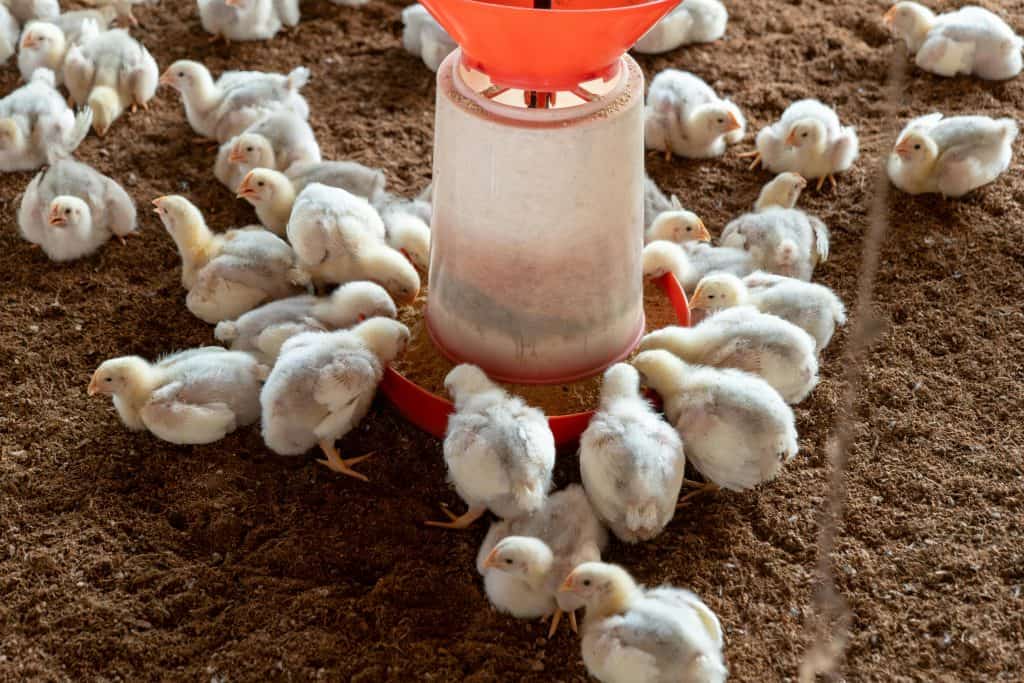
Feeding chickens is more than tossing scraps and hoping for the best. They need balanced nutrition at every stage of life to stay healthy, lay reliably, and avoid health problems.
Here’s what you need to know:
- Starter feed: For chicks, up to 8 weeks. High in protein to support fast growth.
- Grower feed: From 8 to 18 weeks. Still protein-rich, but with lower calcium.
- Layer feed: Once they start laying (around 18 weeks). Higher in calcium and minerals to support egg production.

Most backyard owners use commercial pelleted feed because it ensures hens eat all the nutrients – not just the tasty bits. Crumbles and mash are options too, but messier.
Some key tips:
- Feeders: Use hanging or elevated feeders to keep feed clean and dry.
- Storage: Keep feed in sealed metal containers to keep out mice and moisture.
- Treats: Yes, but sparingly. Things like mealworms, chopped fruit, or cracked corn are fine – no more than 10% of the daily diet.
- Danger zone foods: Avoid avocado skin/pit, green potatoes/tomatoes, rhubarb leaves, chocolate, and spoiled food.
Homemade feeds may sound fun, but balancing the nutrients is extremely difficult. Nutritional deficiencies can lead to weak shells, feather loss, or worse. Stick to tested layer feed and save your creativity for treat time.
How to Keep Your Chickens Healthy

Chickens are hardy, but that doesn’t mean they’re invincible. They hide illness well and can go from fine to struggling pretty fast.
The best way to avoid problems? Keep their environment clean, catch changes early, and have a plan before things go wrong.
Clean Coop, Healthy Birds
A clean, dry, well-ventilated coop is your best defense against disease. Wet bedding, strong ammonia smells, and rodent droppings are all red flags. Do regular spot cleaning, change bedding as needed, and avoid overcrowding.
Dust Baths
If you’ve never seen a chicken flip onto her side and kick dirt all over herself, you’re in for a surprise. Dust bathing is how they clean themselves and prevent external pests like lice and mites.
Make sure they have access to dry, loose soil or create a dust bath area with dirt, sand, and a little food-grade diatomaceous earth mixed in.
Preventing Pests
Mites and lice can be managed naturally by applying a light puff of diatomaceous earth to birds and around the coop.
Keep wild birds away – they often carry parasites and diseases. That means no bird feeders near the run and minimizing spilled feed.
Plan for Vet Care
Not every vet sees chickens, so it’s smart to find an avian or exotics vet before you need one.
Some issues you can handle at home; others need expert help. An annual checkup is a good idea, especially as your birds age or if something seems off.
Keep an Eye on the Flock
Healthy chickens are alert, curious, and active. If one starts isolating herself, limping, or shows signs like pale combs or labored breathing, that’s your cue to act.
Catching issues early often means the difference between a quick recovery and a downhill spiral.
Egg Production: What to Expect, What Not to Worry About
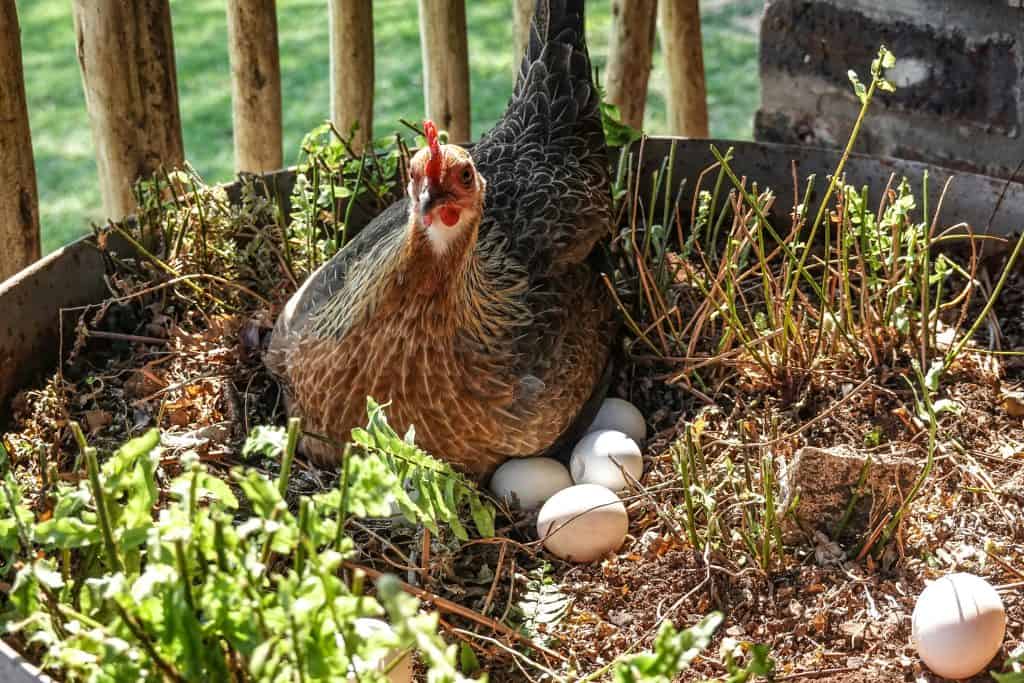
Eggs are often the reason people get chickens, but the laying process isn’t as predictable as a vending machine. It’s tied to age, daylight, health, and even stress levels.
When They Start
Most hens begin laying around five months old. Some are earlier, others take longer. Once they begin, you can expect about one egg per day though this varies by breed and time of year.
Seasonal Changes
As the days get shorter in fall and winter, egg production naturally slows. Some hens even stop entirely during their annual moult, when they shed feathers and conserve energy.
This is normal. If consistent eggs are important, consider adding a safe light source to extend their “daylight” to 12–14 hours.
Cleaning and Storage
Backyard eggs often have a protective layer called the “bloom,” which helps keep bacteria out. Don’t wash your eggs unless absolutely necessary.
Instead, gently scrape off dirt or use fine-grit sandpaper. Washed eggs must be refrigerated. Unwashed eggs can stay at room temperature for several days, but for longer storage, keep them below 40°F.
Aging Hens
Over time, hens lay fewer eggs. Their output tends to drop after two or three strong laying years.
Some owners choose to keep older hens around as companions or compost contributors even if their laying days are mostly behind them.
Composting and Waste Management
There’s no delicate way to say it – chickens produce a lot of manure. But instead of being a downside, it can actually be a major benefit if you handle it right.
Chicken poop is packed with nitrogen, which is great for compost. But it’s too “hot” to put directly on plants. It needs to be composted first to prevent burning roots or spreading pathogens.
Composting the Right Way
Mix manure with carbon-rich materials like straw, leaves, or wood shavings. Let it compost for several months before using it in the garden.
Turning the pile regularly helps speed up the process and reduces odor. The result? A nutrient-rich, balanced compost that’s perfect for vegetables and flowers.
Coop Cleanliness and Smell Control
Routine cleaning is key. Scoop droppings from under the roosts, refresh bedding often, and keep things dry.
Wet, packed bedding leads to smells and attracts flies. Some owners use the “deep litter” method, layering bedding and letting it break down over time, but it still requires monitoring.
What About Dead Birds?
It’s unpleasant to think about, but chickens don’t live forever. Composting is one way to handle losses, especially in rural areas.
In urban settings, check local regulations. Some cities allow composting; others require cremation or special disposal. Always handle with gloves and care.
Roosters: The Loud, Risky Bird You Probably Don’t Need

A common misconception is that you need a rooster for your hens to lay eggs. You don’t.
Hens will lay just fine without one. Roosters are only needed if you want fertilized eggs for hatching and for most backyard flocks, that’s not the goal.
Noise and Neighborhood Issues
Roosters are loud. They don’t just crow at sunrise – they crow throughout the day, sometimes for no reason at all.
That’s charming on a farm. In a suburban backyard? It’s a fast way to get on your neighbor’s bad side. In fact, many city ordinances ban roosters entirely for this reason.
Aggression and Flock Dynamics
Roosters can be protective, which sometimes crosses into aggressive. They may charge people or bully the hens. While some are mellow, others can become a safety issue especially around kids.
Accidental Roosters
Sexing baby chicks isn’t foolproof. Even in so-called “guaranteed female” batches, an occasional cockerel sneaks through.
If you live somewhere that doesn’t allow roosters, you’ll need a plan. Rehoming isn’t always easy – some shelters won’t take them, and farm sanctuaries fill up fast.
A Role Best Skipped
Unless you’re breeding or have plenty of land and no neighbors, you’re usually better off skipping the rooster. Hens get along fine without one, and you’ll have fewer surprises (and less noise) to manage.
Daily and Seasonal Workload (What You’re Actually Signing Up For)
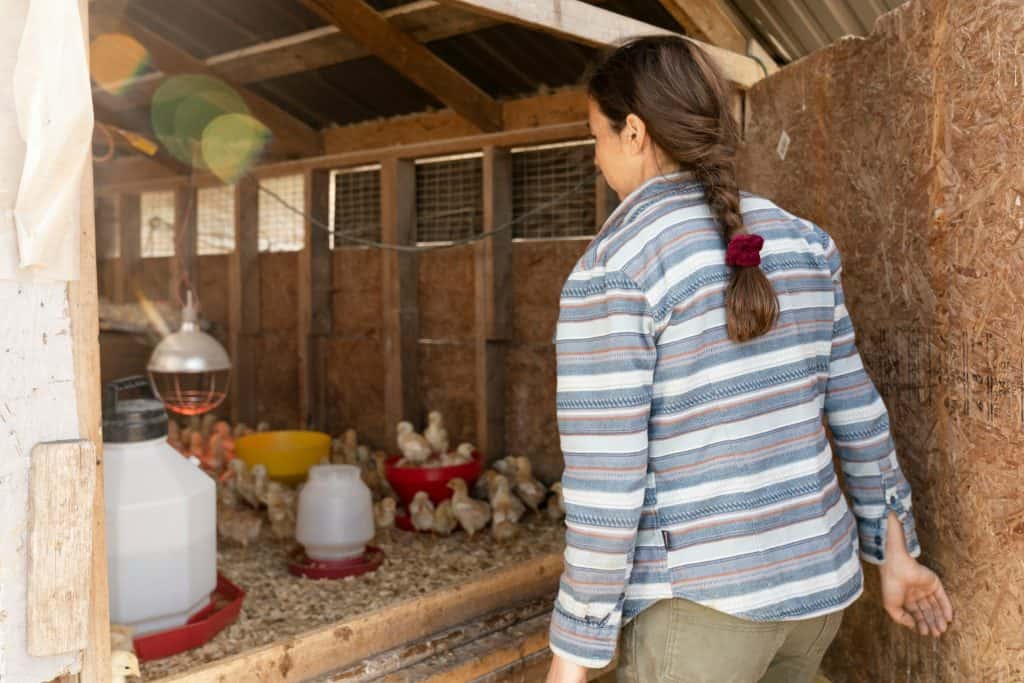
Keeping chickens is often framed as simple. And sure, once you’ve got a rhythm, it’s not hard. But “low maintenance” doesn’t mean “no maintenance.” You’re taking on daily responsibility, and there are no days off.
Your Daily Routine
Each day, you’ll need to feed your chickens, refresh their water, and check that everyone looks healthy.
Collecting eggs becomes part of the ritual – fun for some, forgettable until it’s urgent for others. If it’s winter, you might be thawing waterers. If it’s hot, you’re checking for overheating.
Weekly and Monthly Tasks
Every week or so, clean the coop. Scoop out droppings, change bedding, and keep things fresh. You’ll also need to check fencing, restock feed, and watch for signs of pests or illness.
Seasonal Chores
In the colder months, ventilation becomes crucial, and you’ll be focused on keeping water from freezing.
In summer, shade and hydration take priority. During moulting season, expect more feathers, fewer eggs, and maybe a cranky hen or two.
Chickens are pretty self-sufficient, but they rely on you for their safety and comfort. If you’re gone for more than a day or two, you’ll need someone who knows the routine to take over.
It’s not a set-it-and-forget-it system – it’s a living, pecking, egg-laying rhythm that becomes part of your day.
Common Problems and Mistakes to Watch For
Even the most well-meaning chicken keepers run into issues. Most are avoidable with a little knowledge and planning.
Overcrowding
Too many chickens in too little space is a recipe for stress, illness, and aggression. Always plan coop and run sizes for the number of birds you have – then leave a little buffer in case you add more later.
Skimping on Predator Protection
Chicken wire isn’t predator-proof. Raccoons can reach through it, and foxes can chew or dig under it. Hardware cloth, buried fencing, and secure latches are worth every penny.
Neglecting Ventilation
A coop without airflow can get damp and toxic fast. Chickens give off moisture as they breathe, and that builds up without fresh air. Poor ventilation leads to respiratory problems – one of the most common flock health issues.
Improper Feed or Treat Overload
Feeding layer feed to chicks, or giving too many treats, leads to imbalances. Chickens don’t need a gourmet diet – they need the right nutrients in the right ratios. Stick to proper feed for their age and give treats only in moderation.
Thinking It’s Easier Than It Is
This is the biggest trap. People assume chickens are easy because they’re small and cute. But like any animal, they require time, observation, care, and a bit of grit sometimes literally, when you’re scrubbing the waterer in the cold.
Is Backyard Chicken Farming Right for You?
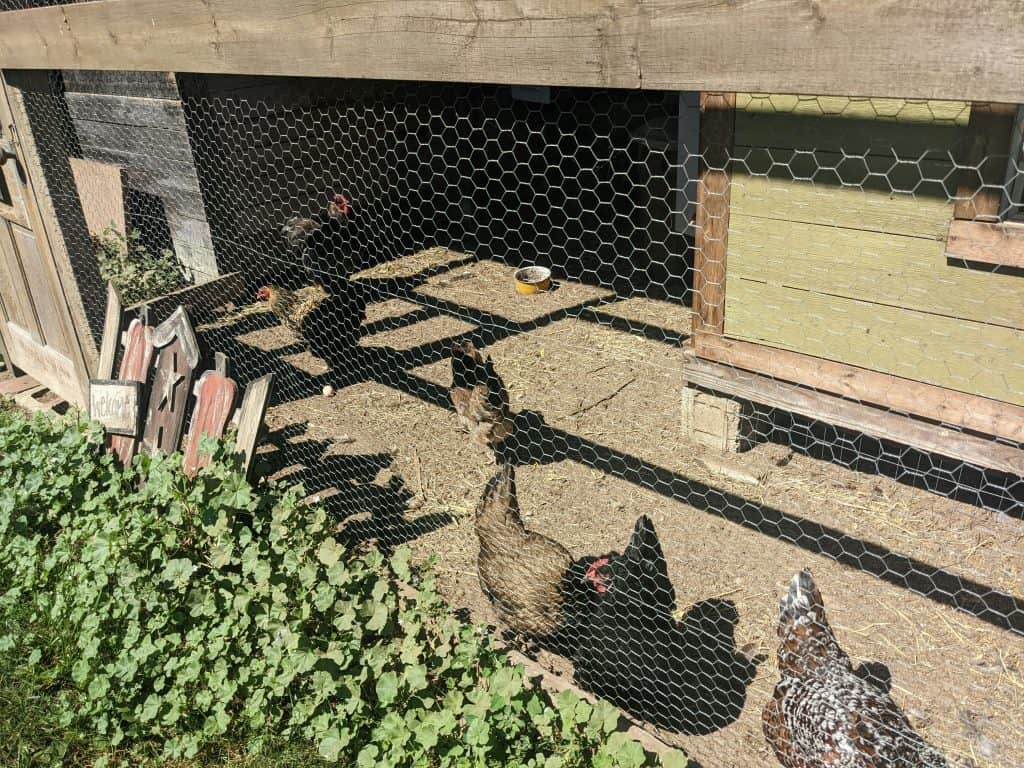
Raising chickens in your backyard is rewarding, but not in the Instagram-perfect way people might expect. It’s messy. It’s daily. It’s not always cheaper than buying a dozen eggs from the store.
But if you’re looking for fresh food, pest control, garden gold, and a connection to your food system (or just an excuse to spend time outside) chickens might just be a fit.
They don’t ask for much, but they do ask consistently. Clean water, good feed, protection from predators, and a safe place to sleep – that’s the core of it.
Whether you’re collecting pastel blue eggs, watching them peck through the compost pile, or chasing one across the yard because she escaped again, there’s something grounding about it.
Start small. Do the research. Get your setup right. And expect that some things will go sideways anyway. That’s part of the learning curve, and honestly, part of the fun.
If you’re in it for more than the eggs, you’ll find a rhythm and maybe a few unexpected friendships along the way.
Frequently Asked Questions (FAQs)
New to chickens? No worries – everyone starts somewhere. These quick answers cover some of the most common questions people have when they're thinking about adding a few feathered friends to the backyard.
1. Do I need a rooster for my hens to lay eggs?
No. Hens lay eggs without any help from roosters. A rooster is only needed if you want fertilized eggs for hatching.
2. How much does it cost to raise backyard chickens?
Startup costs – coop, fencing, feeders, birds – can run a few hundred dollars. After that, feed and bedding are your main expenses. It's rarely cheaper than grocery store eggs, but the value is in quality, experience, and sustainability.
3. How long do chickens live?
Most backyard hens live 5 to 10 years, depending on breed and care. Peak egg-laying typically happens in the first 2–3 years.
4. Can I keep chickens if I have a small yard?
Yes, as long as local rules allow it and you provide enough space per bird. Smaller, docile breeds are great for limited space. Just be sure you can meet their needs for housing, safety, and enrichment.
5. What happens if I get a rooster by mistake?
It happens, especially when buying chicks. If your area doesn’t allow roosters or the noise is too much, rehoming is usually the best option. Local farms, sanctuaries, or online chicken groups may help.
Ready To Transform Your Garden?
Are you looking for the best way to layout your garden beds? Maybe you're feeling a bit stuck on how to make the most of your space?
We’ve got you covered! Check out our 101+ Garden Bed Layout Ideas for your next raised bed project. This guide is filled with creative and practical ideas that can help you design a garden that fits your style, whether you’re just starting out or have been gardening for years.
Get your copy today and get inspired to bring your gardening dreams to life.

